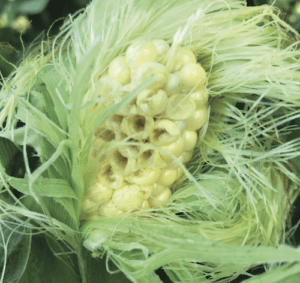
May 6, 2022Laser scarecrows: A high-tech solution for protecting crops from birds
Farmers in the Northeast are testing laser scarecrows as a new way to protect crops from bird damage.

By projecting a constantly moving laser beam across fields, the devices frighten birds before they can perch or feed.
Researchers at the University of Rhode Island (URI) and Cornell Cooperative Extension are leading the trials, hoping to offer growers a reliable, cost-effective alternative to balloons, cannons, and other short-lived deterrents.
How laser scarecrows work
The URI system projects a 50-milliwatt green beam that sweeps across a field. Birds, with eyesight nearly 10 times sharper than humans, perceive the moving light as a threat and quickly scatter.
Unlike propane cannons or scary-eyed balloons, lasers don’t lose their impact over time. In fact, repeated exposure makes birds more wary.
“Lots of studies haven’t been done yet,” said Rebecca Nelson Brown, associate professor in URI’s Department of Plant Sciences and Entomology. “It’s fairly new technology in ag.”
Testing and research trials

Researchers began testing URI’s open-source units on New York farms. The system, priced around $650, covers up to nine acres—an affordable option for small to mid-sized growers.
The second season of testing in Rhode Island sweet corn began in April, and farmers are now trying the devices on blueberries and grapes. Cherries may be next; British Columbia growers already use lasers in their orchards.
“These laser scarecrows are designed for small fields, or those with multiple elevations, where large commercial units aren’t practical,” Nelson Brown explained. The goal is to make them available to cooperating growers at cost.
Species response and best practices
Laser scarecrows work best on flocking birds such as blackbirds, cedar waxwings, cowbirds, gulls, robins, and starlings. Birds like crows present more of a challenge. “The URI units should work against crows,” Nelson Brown said, “but it depends on flock size and whether the lasers are in place before the crows discover the field.”
David Brown, a URI computer science research who has worked on the project since 2017, stressed the importance of timing: “If we keep the scouts out, we do a much better job keeping the rest of the flock out. Try to get them out there as silking starts or at the tail end of silking.”
Placement also matters:
- Corn: Mount lasers at tassel height, aiming beams horizontally. On slopes, install at the top and angle beams downward.
- Blueberries and grapes: Mount lasers a few feet above the canopy and sweep beams across clusters of varying height.
Limits and safety considerations for laser scarecrows
Laser scarecrows require consistent monitoring. Growers must check batteries and reposition units as crops grow, which is why most farmers use them alongside propane cannons or even the occasional shotgun blast. “That just keeps birds on edge enough because they don’t know what’s coming next,” said David Brown.
Lasers, however, do not deter animals. While commercials products claim to create “virtual fences” for deer, Rebecca Nelson Brown explained that studies show deer generally ignore lasers. Mammals rely on scent and sound to sense threats.
Safety is another concern. Farmers must avoid angling lasers skyward or toward nearby roads and homes. URI’s system allows growers to set tape barriers so beams skip sensitive areas.
Commercial options and future outlook
The URI laser scarecrow offers a lower-cost alternative to commercial systems like Avix Automatic, which sells for about $10,000 and cover 20 – 100 acres with a 500-milliwatt laser.
URI’s design, by contrast, ships inexpensively and suits growers managing multiple smaller plots.
As grant funding winds down, further development of the URI unit remains uncertain. Still, researchers and farmers see potential for improvements, such as easier controls and sturdier designs.
“Laser scarecrows are another tool in the toolbox,” David Brown said. “When growers use them early and strategically, they dramatically reduce crop losses.”
— Doug Ohlemeier, assistant editor
















